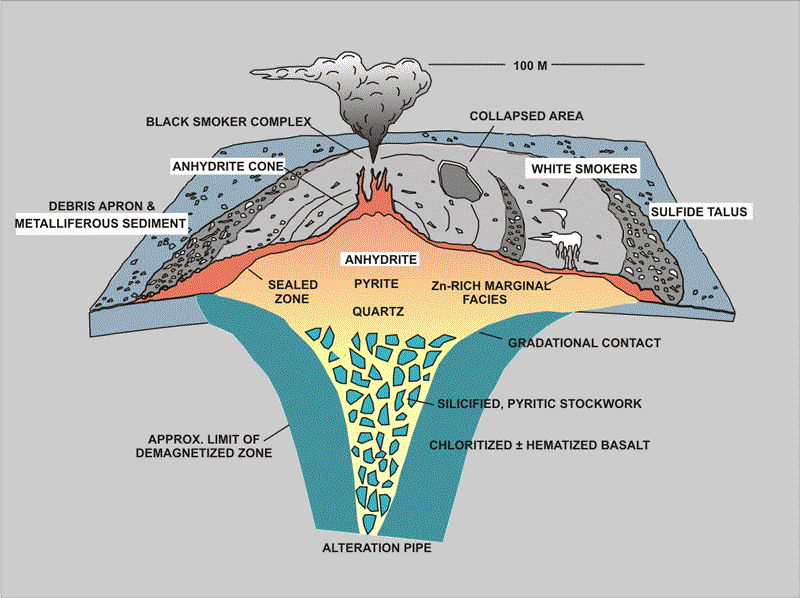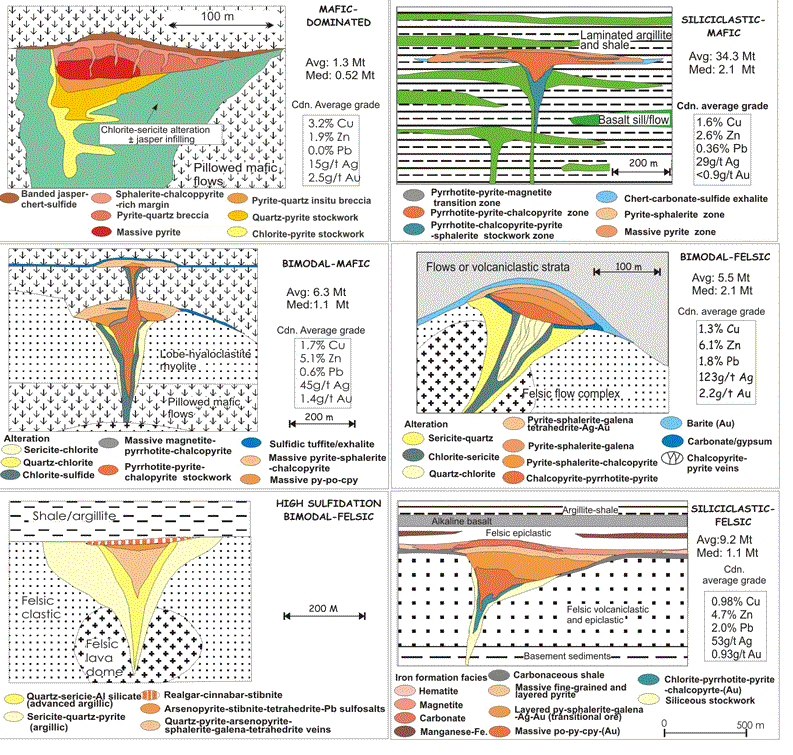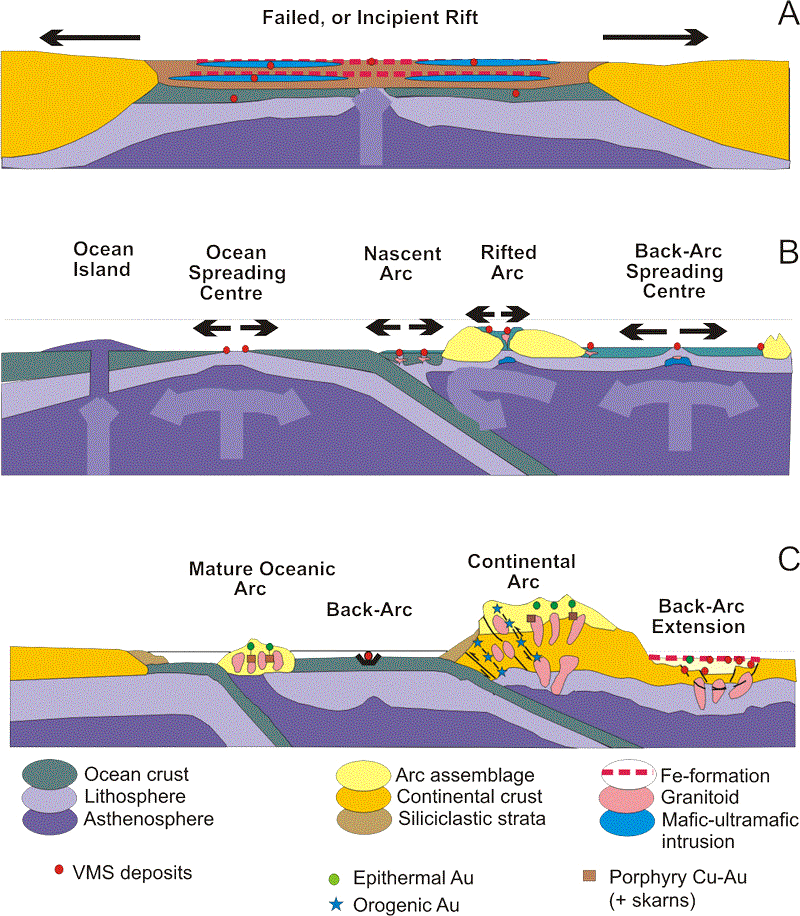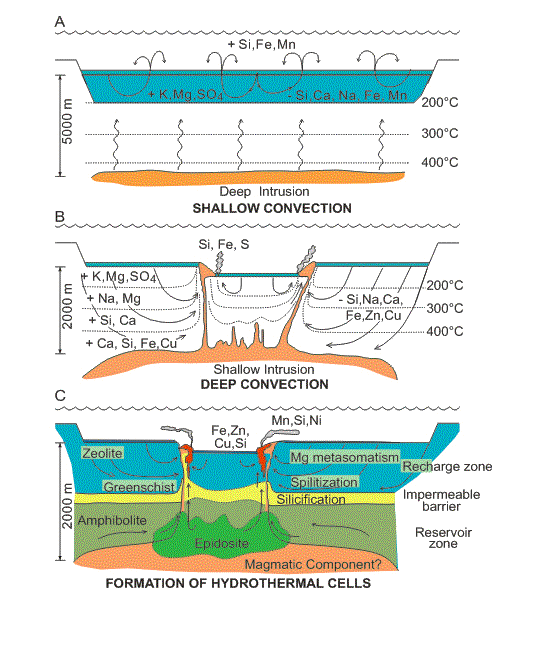
Figure 1:
Schematic diagram of the modern TAG sulphide deposit on the Mid-Atlantic
Ridge. This represents a classic cross-section of a VMS deposit,
with concordant semi-massive to massive sulphide lens underlain
by a discordant stockwork vein system and associated alteration
halo, or "pipe". From Hannington et al. (1998).

Figure 4:
Graphic representation of the lithological classification for
VMS deposits by Barrie and Hannington (1999), with the addition
of a "high sulphidation" type to the bimodal felsic
group. Average and median sizes for each type for all Canadian
deposits, along with average grade, are shown.

Figure 11:
There are three principal tectonic environments in which VMS
deposits form, each representing a stage in the formation of
the Earth's crust. (A) Early Earth evolution was dominated by
mantle plume activity, during which numerous incipient rift events
formed basins characterized by early ocean crust in the form
of primitive basalts and/or komatiites, followed by siliciclastic
infill and associated Fe-formation and mafic-ultramafic sills.
In the Phanerozoic, similar types of incipient rifts formed during
transpressional, back-arc rifting (Windy Craggy). (B) The formation
of ocean basins was associated with the development of ocean
spreading centers along which mafic-dominated VMS deposits formed.
The development of subduction zones resulted in oceanic arc formation
with associated extensional domains in which bimodal mafic, bimodal
felsic, and mafic-dominated VMS deposits formed. (C) The formation
of mature arc and ocean-continent subduction fronts resulted
in successor arc and continental volcanic arc assemblages that
host most of the felsic-dominated and bimodal siliciclastic deposits.
Thin black arrows represent direction of extension and thick,
pale arrows represent mantle movement.

Figure 14:
The development and maturation of a generic subseafloor hydrothermal
system involves three stages. (A) The relatively deep emplacement
of a subvolcanic intrusion below a rift/caldera and the establishment
of a shallow circulating, low-temperature seawater convection
system. This results in shallow subseafloor alteration and associated
formation of hydrothermal exhalative sediments. (B) Higher level
intrusion of subvolcanic magmas and resultant generation of a
deep-seated subseafloor seawater convection system in which net
gains and losses of elements are dictated by subhorizontal isotherms.
(C) Development of a mature, large-scale hydrothermal system
in which subhorizontal isotherms control the formation of semiconformable
hydrothermal alteration assemblages. The high-temperature reaction
zone next to the cooling intrusion is periodically breached due
to seismic activity or dyke emplacement, allowing focused upflow
of metal-rich fluids to the seafloor and formation of VMS deposits.
From Galley (1993).
カナダ地質調査所(Geological Survey of Canada)による『Mineral Deposits of Canada Maps of deposits and resources(world)』から